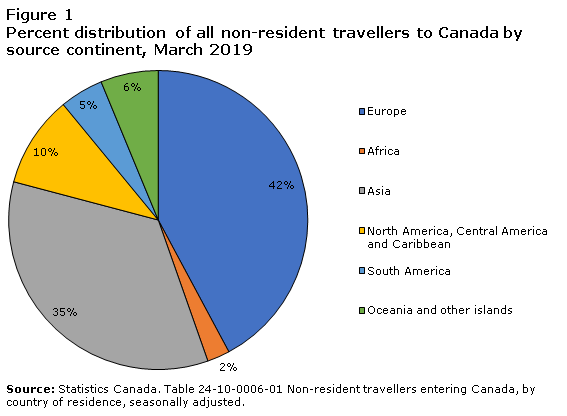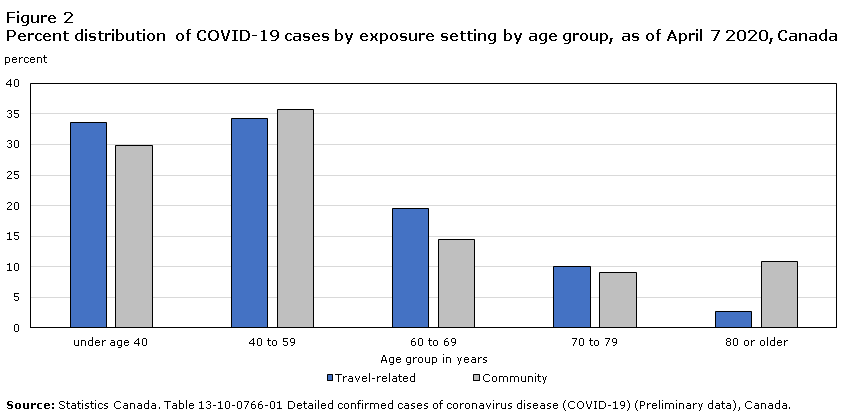Just the Facts
Travel-related exposure to COVID-19
Since the onset of COVID-19, health authorities have been monitoring the transmission of the virus via travel and community exposures. In Canada, as in other countries, the first cases of COVID-19 were attributed to travel-related exposure. After the government of Canada advised Canadians on March 13, 2020 to avoid all non-essential travel, new cases are increasingly being attributed to community transmission.
Travel to and from Canada was increasing prior to COVID-19
In Canada, as of April 7, about 26% of COVID-19 cases to date have been related to travel exposure.
Travel has always been important to Canadians, both as travellers and as hosts to travellers from elsewhere. In 2019, Canadian residents made 12.3 million trips overseas (countries other than the United States), surpassing the previous record set in 2017. At the same time, Canada received a record 22.1 million international tourists from abroad in 2019, surpassing the previous year's record by approximately one million. Moreover, this time last year (March 2019) saw 4.8 million Canadians returning to Canada after having been abroad, with about 4-out-of-5 returning from the United States. That same month, the majority of people who travelled to Canada were from Europe (42%) or from Asia (35%) (Figure 1).
Travel related COVID-19 cases more prevalent for males
About 52% of the COVID-19 cases in Canada related to travel are among males, 48% are among females. Approximately 9% of travel-related cases have been hospitalized (among those whose hospitalization status is known), and about 62% of these cases are among males.
Age distribution of travel-related COVID-19 cases differs from community exposure
The age distribution of COVID-19 cases in Canada among those with travel-related exposure is somewhat different from those with community exposure. For those under age 40 or aged 60 to 69, exposure to COVID-19 as of April 7, tended to be travel-related whereas for 80 years of age or older, community exposure was more prevalent. (Figure 2).

Data table for Figure 1
| percent | |
|---|---|
| Europe | 42 |
| Africa | 2 |
| Asia | 35 |
| North America, Central America and Caribbean | 10 |
| South America | 5 |
| Oceania and other islands | 6 |
| Source: Statistics Canada. Table 24-10-0006-01 Non-resident travellers entering Canada, by country of residence, seasonally adjusted. | |

Data table for Figure 2
| Age group in years | Travel-related | Community |
|---|---|---|
| percent | ||
| under age 40 | 33.60 | 29.91 |
| 40 to 59 | 34.33 | 35.79 |
| 60 to 69 | 19.48 | 14.40 |
| 70 to 79 | 9.94 | 9.01 |
| 80 or older | 2.66 | 10.89 |
| Source: Statistics Canada. Table 13-10-0766-01 Detailed confirmed cases of coronavirus disease (COVID-19) (Preliminary data), Canada. | ||
- Date modified: